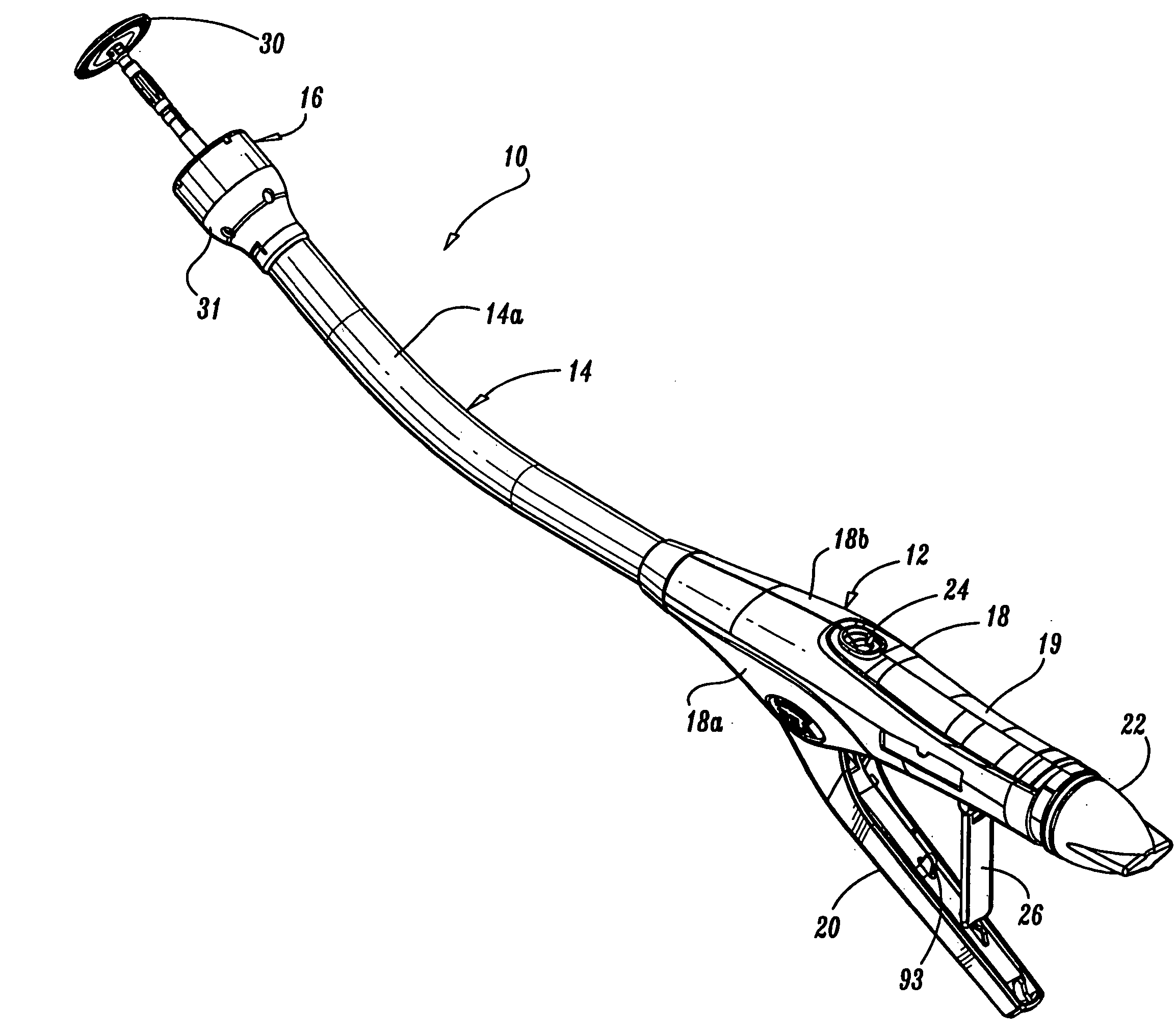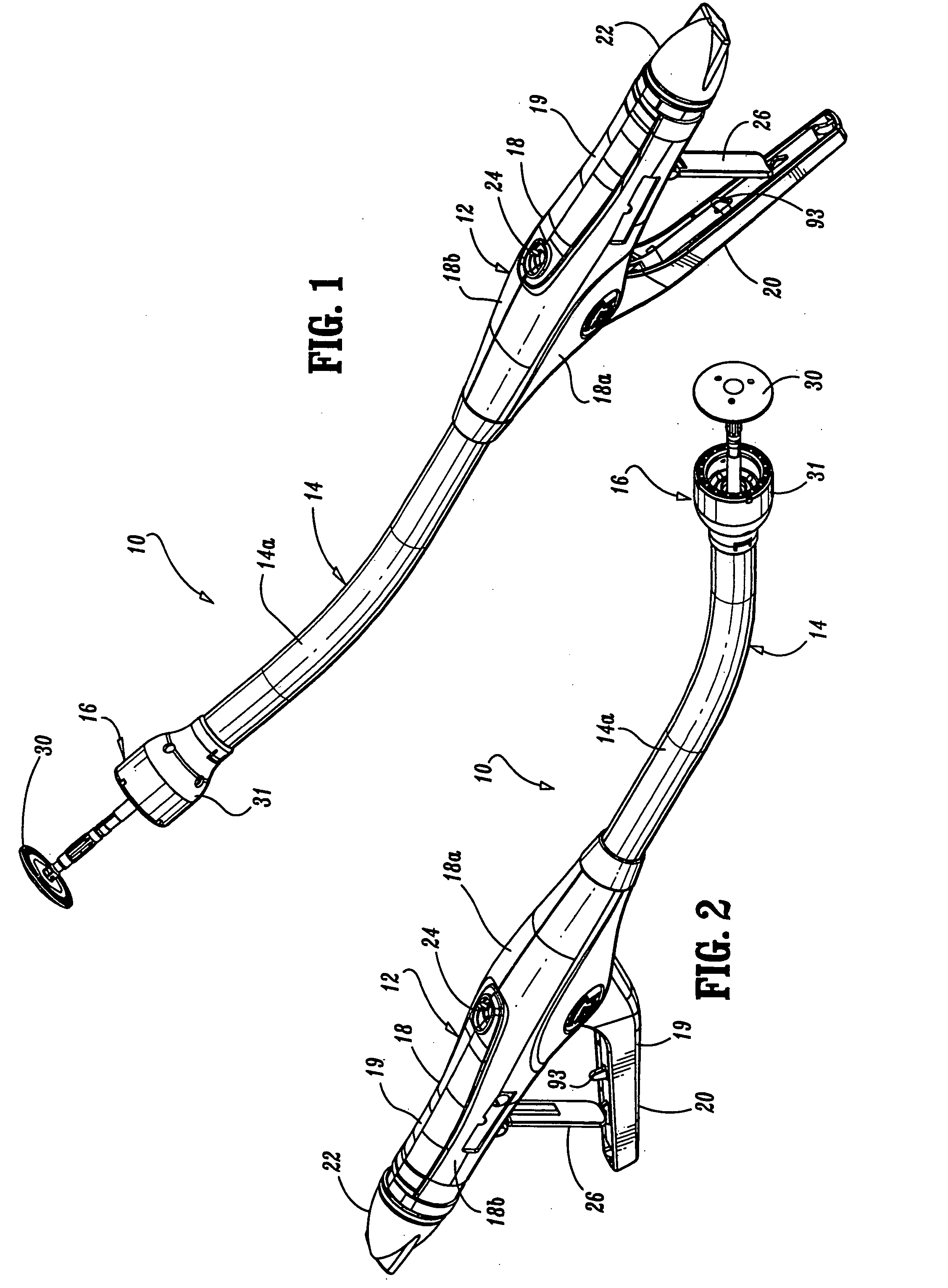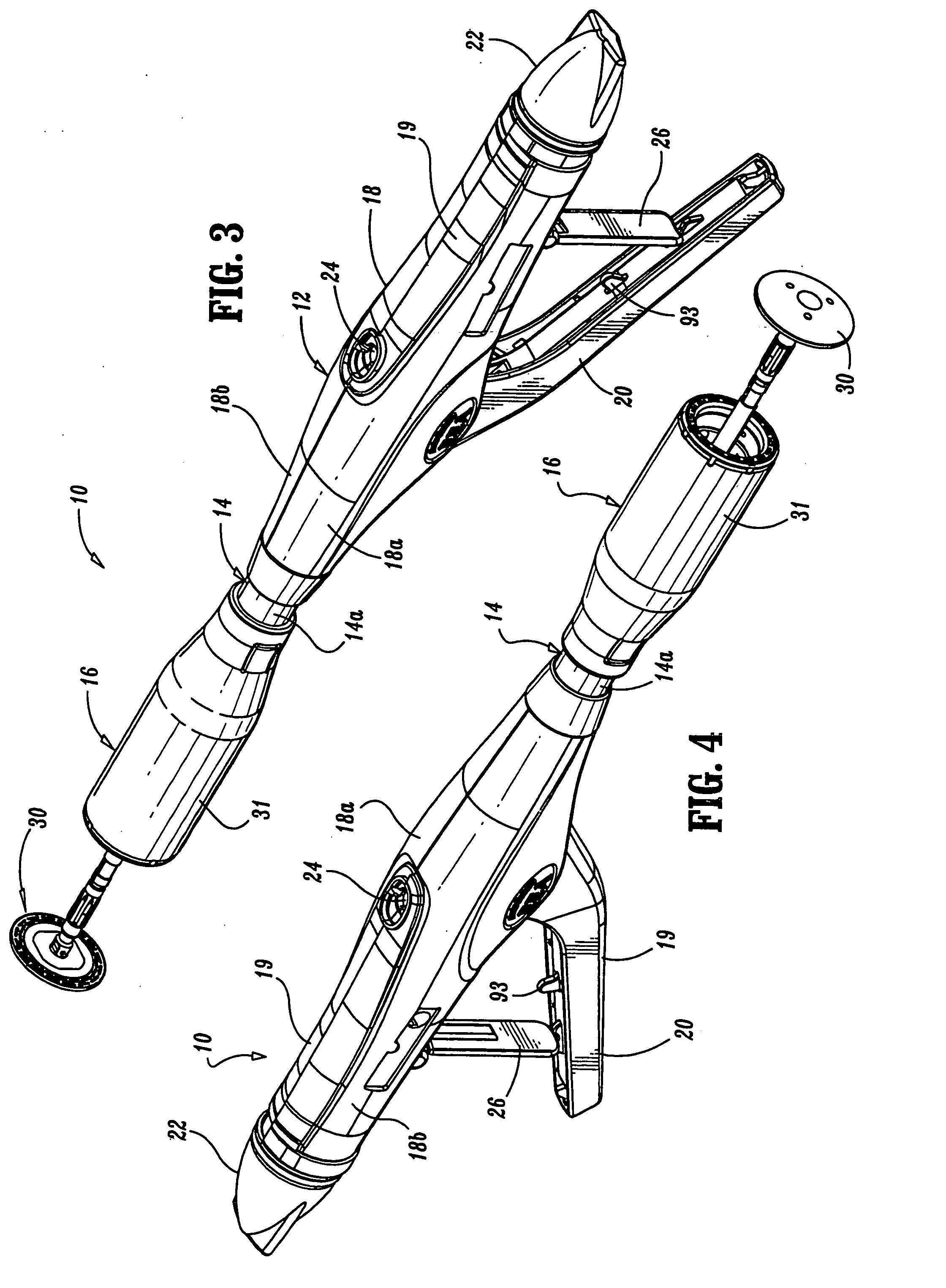Surgical Stapling Device for Performing Circular Anastomoses
a stapling device and hollow tissue technology, applied in the field of surgical stapling devices, can solve the problems of difficult and time-consuming for surgeons to attach and detach trocars to the anvil assembly, and it is difficult to determine whether the anvil assembly has been properly reattached to the stapling device, so as to reduce the firing force and improve the mechanical advantage.
- Summary
- Abstract
- Description
- Claims
- Application Information
AI Technical Summary
Benefits of technology
Problems solved by technology
Method used
Image
Examples
Embodiment Construction
[0168] Preferred embodiments of the presently disclosed surgical stapling device will now be described in detail with reference to the drawings in which like reference numerals designate identical or corresponding elements in each of the several views.
[0169]FIGS. 1-6 illustrate one preferred embodiment of the presently disclosed surgical stapling device shown generally as 10. Briefly, surgical stapling device 10 includes a proximal handle portion 12, an elongated central body portion 14 including a curved elongated outer tube 14a, and a distal head portion 16. Alternately, in some surgical procedures e.g., the treatment of hemorrhoids, it is desirable to have a substantially straight central body portion. See FIGS. 3 and 4. Moreover, the length and or the diameter of body portion 14 and head portion 16 may be varied to suit a particular surgical procedure. See FIGS. 5 and 6. Throughout this description, the term “proximal” will refer to the portion of the instrument closest to the ...
PUM
| Property | Measurement | Unit |
|---|---|---|
| resilient | aaaaa | aaaaa |
| length | aaaaa | aaaaa |
| flexible | aaaaa | aaaaa |
Abstract
Description
Claims
Application Information
 Login to View More
Login to View More - R&D
- Intellectual Property
- Life Sciences
- Materials
- Tech Scout
- Unparalleled Data Quality
- Higher Quality Content
- 60% Fewer Hallucinations
Browse by: Latest US Patents, China's latest patents, Technical Efficacy Thesaurus, Application Domain, Technology Topic, Popular Technical Reports.
© 2025 PatSnap. All rights reserved.Legal|Privacy policy|Modern Slavery Act Transparency Statement|Sitemap|About US| Contact US: help@patsnap.com



